Interested in exploring a different side of the fair British Isles? Lizzie Carr, author of Paddling Britain, has chosen her favourite lakes on which to enjoy stand-up paddleboarding.
Llyn Padarn, Gwynedd
Best for: paddling away from the crowds
Imagine staring up towards Snowdon’s peak from the middle of the lake that sits underneath it with nothing within earshot bar the swishing of water and the odd swan taking to the air on whooshing wings. No droves of tourists racing past to reach the trig pillar marking Snowdon’s crest. Just you and the views. If that doesn’t tickle your fancy then nothing will.
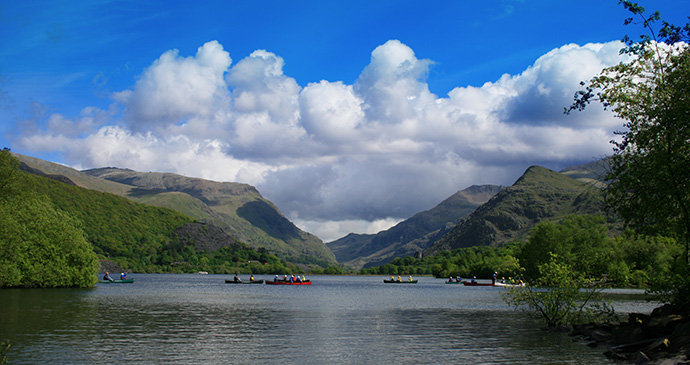
Like many of Snowdonia’s lakes, Llyn Padarn owes its existence to the passage of a glacier. At just over 3km (2 miles) long, it is among the largest. Being situated at the northwest foot of Mt Snowdon itself renders it among the most picturesque. However, unlike other lakes, Padarn is largely sheltered – which is a very good thing for a paddler.
It also benefits from a unique assemblage of interest features, notably a train line that runs parallel with the lake, a slate museum on its banks, and a famous tree that is known by photographers across the world. However many times you paddle Padarn, there is always something new to discover.
Ullswater, Cumbria
Best for: uninterrupted beauty, year round
The slow pace of life in the Lake District lends itself perfectly to paddling. Glide gently across the water surface at strolling pace, encumbered with nothing but a blade to propel you and let breathtaking vistas envelop you. Magnificent rugged hills rise from the shores of the long, narrow lake of Ullswater – England’s third-highest mountain, Helvellyn, is accessed from the village of Glenridding at the waterbody’s southern tip.
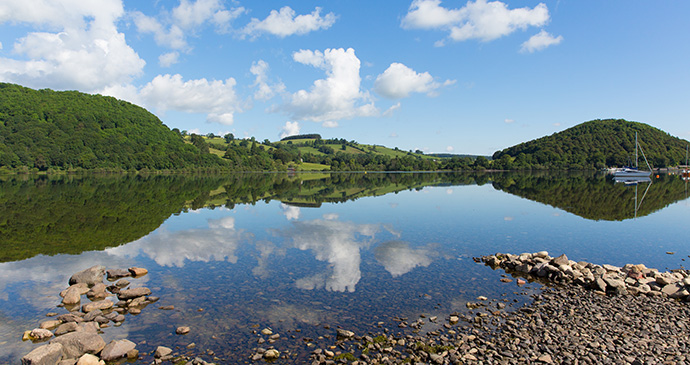
The lake’s beauty is enhanced by any seasonal touch, whether spring flowers to a dusting of snow, the reflections of puffy clouds or the early-morning mist introducing a flat-calm day.
Wast Water, Cumbria
Huddled in the quiet western fells of the Lake District, Wast Water (or Wastwater) is a world away from the hubbub of Windermere or Derwent Water – and thus provides a very different and altogether wilder experience for the paddler.
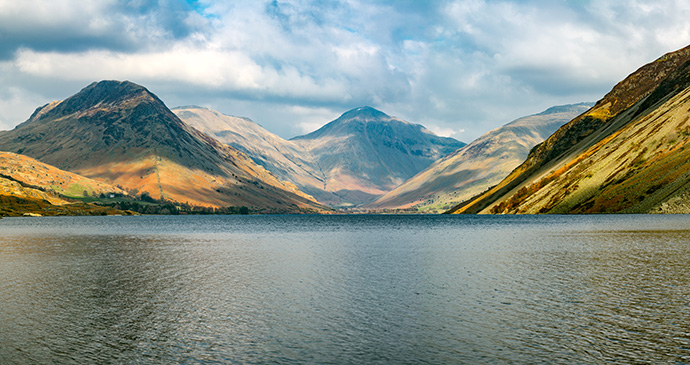
The view along the lake towards the hulking masses of Kirk Fell, Great Gable and Scafell Pike (England’s highest mountain, lest you forget) has been voted Britain’s favourite, according to a poll conducted by the ITV series Britain’s Favourite View. How better to appreciate it than from the water on Britain’s deepest lake? With England’s smallest church in the adjacent hamlet, this truly is a route of superlatives.
Derwent Water, Cumbria
Best for: paddling with wildlife
Surrounded by snow-capped fells, Derwent Water is a place of considerable beauty and justifiably one of the best-loved waters of the Lake District. The hills serve a practical purpose too – windbreaks for paddlers in this routinely breezy region. The wood-lined lake stretches for 4.6km (2¾ miles) and is dotted with 13 choice islands, all demanding exploration by intrepid paddlers. A scenic and exciting paddle is assured.
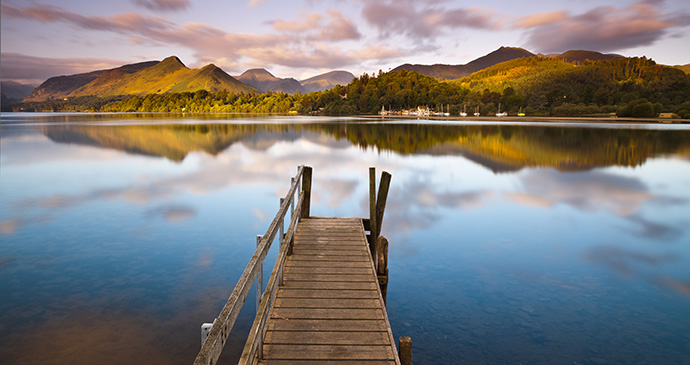
What’s more, Derwent Water is an important area for wildlife – a Site of Special Scientific Interest. Although the chances of seeing one are negligible, the lake is home to perhaps Britain’s rarest fish, the vendace, which is an ice age relic. While paddling or resting on the lake shores, you may spot red squirrel, otter or wading bird such as snipe and common sandpiper.
Report any red squirrels you see to a group called Red Squirrels Northern England, which monitors the species’s status. Should you encounter one of the bushy-tailed, bright-eyed, tuft-eared tree-climbers, there’s an outside chance that one of its ancestors may have inspired a famous children’s book. Rumour has it that Beatrix Potter was staying by Derwent Water when she wrote The Tale of Squirrel Nutkin.
Loch Laggan, Highlands
Best for: its hidden beach
Open-access laws in Scotland make the country a playground for watersports. The slender form of Loch Laggan, between Newtonmore and Spean Bridge, measures 11km (7 miles) from tip to ‘toe’, and lays claim to harbouring Britain’s largest freshwater beach – a highly suitable resting spot after a paddle.
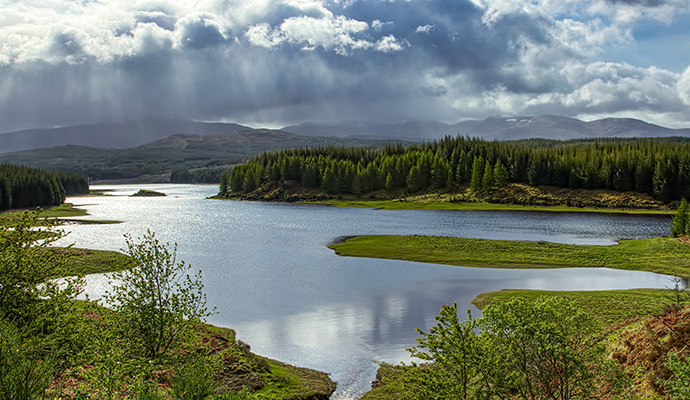
This journey provides unbridled fun, combining a beautiful paddle on a freshwater loch with lounging on a beach – with the complement of a walk to stunning waterfalls.
More information
Discover more of the Britain’s paddling routes in Lizzie’s guide: